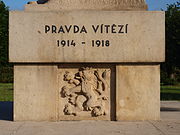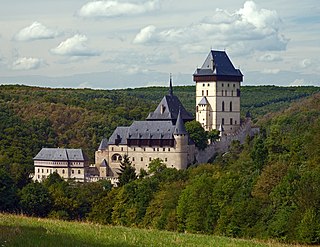
Bohemia is the westernmost and largest historical region of the Czech Republic. Bohemia can also refer to a wider area consisting of the historical Lands of the Bohemian Crown ruled by the Bohemian kings, including Moravia and Czech Silesia, in which case the smaller region is referred to as Bohemia proper as a means of distinction.

Czechoslovakia was a landlocked state in Central Europe, created in 1918, when it declared its independence from Austria-Hungary. In 1938, after the Munich Agreement, the Sudetenland became part of Nazi Germany, while the country lost further territories to Hungary and Poland. Between 1939 and 1945, the state ceased to exist, as Slovakia proclaimed its independence and Carpathian Ruthenia became part of Hungary, while the German Protectorate of Bohemia and Moravia was proclaimed in the remainder of the Czech Lands. In 1939, after the outbreak of World War II, former Czechoslovak President Edvard Beneš formed a government-in-exile and sought recognition from the Allies.
The history of the Czech lands – an area roughly corresponding to the present-day Czech Republic – starts approximately 800 years BCE. A simple chopper from that age was discovered at the Red Hill archeological site in Brno. Many different primitive cultures left their traces throughout the Stone Age, which lasted approximately until 2000 BCE. The most widely known culture present in the Czech lands during the pre-historical era is the Únětice Culture, leaving traces for about five centuries from the end of the Stone Age to the start of the Bronze Age. Celts – who came during the 5th century BCE – are the first people known by name. One of the Celtic tribes were the Boii (plural), who gave the Czech lands their first name Boiohaemum – Latin for the Land of Boii. Before the beginning of the Common Era the Celts were mostly pushed out by Germanic tribes. The most notable of those tribes were the Marcomanni and traces of their wars with the Roman Empire were left in south Moravia.

Tomáš Garrigue Masaryk was a Czechoslovak statesman, progressive political activist and philosopher who served as the first president of Czechoslovakia from 1918 to 1935. He is regarded as the founding father of Czechoslovakia.
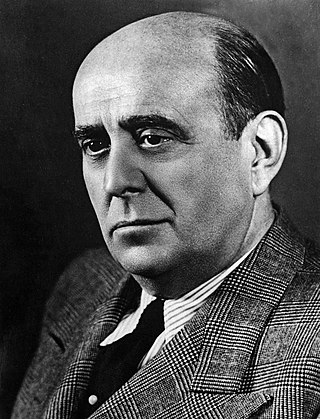
Jan Garrigue Masaryk was a Czech diplomat and politician who served as the Foreign Minister of Czechoslovakia from 1940 to 1948. American journalist John Gunther described Masaryk as "a brave, honest, turbulent, and impulsive man".

The president of the Czech Republic, officially the President of the Republic, is the head of state of the Czech Republic and the commander-in-chief of the Armed Forces of the Czech Republic.
The First Czechoslovak Republic emerged from the collapse of the Austro-Hungarian Empire in October 1918. The new state consisted mostly of territories inhabited by Czechs and Slovaks, but also included areas containing majority populations of other nationalities, particularly Germans (22.95 %), who accounted for more citizens than the state's second state nation of the Slovaks, Hungarians (5.47 %) and Ruthenians (3.39 %). The new state comprised the total of Bohemia whose borders did not coincide with the language border between German and Czech. Despite initially developing effective representative institutions alongside a successful economy, the deteriorating international economic situation in the 1930s gave rise to growing ethnic tensions. The dispute between the Czech and German populations, fanned by the rise of Nazism in neighbouring Germany, resulted in the loss of territory under the terms of the Munich Agreement and subsequent events in the autumn of 1938, bringing about the end of the First Republic.
With the collapse of the Austria-Hungary at the end of World War I, the independent country of Czechoslovakia was formed as a result of the critical intervention of U.S. President Woodrow Wilson, among others.

The Czechoslovak Socialist Republic, known from 1948 to 1960 as the Czechoslovak Republic, Fourth Czechoslovak Republic, or simply Czechoslovakia, was the Czechoslovak state from 1948 until 1989, when the country was under communist rule, and was regarded as a satellite state in the Soviet sphere of interest.

Satyameva Jayate is a part of a mantra from the Hindu scripture Mundaka Upanishad. Following the independence of India, it was adopted as the national motto of India on 26 January 1950, the day India became a republic. It is inscribed in the Devanagari script at the base of the Lion Capital of Ashoka and forms an integral, part of the Indian national emblem. The emblem and the words "Satyameva Jayate" are inscribed on one side of all Indian currency and national documents.

The coat of arms of Czechoslovakia were changed many times during Czechoslovakia’s history, some alongside each other. This reflects the turbulent history of the country and a wish to use appropriate territorial coats of arms.
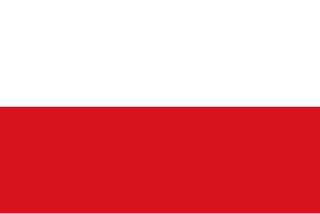
The First Czechoslovak Republic, often colloquially referred to as the First Republic, was the first Czechoslovak state that existed from 1918 to 1938, a union of ethnic Czechs and Slovaks. The country was commonly called Czechoslovakia, a compound of Czech and Slovak; which gradually became the most widely used name for its successor states. It was composed of former territories of Austria-Hungary, inheriting different systems of administration from the formerly Austrian and Hungarian territories.
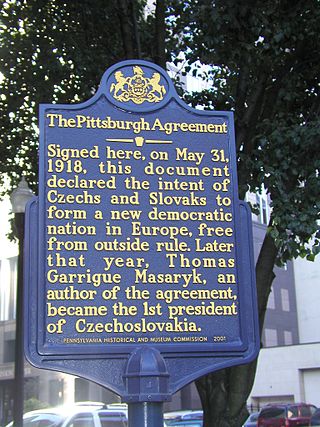
The Pittsburgh Agreement was a memorandum of understanding completed on May 31, 1918, between members of Czech and Slovak expatriate communities in the United States of America. It replaced the Cleveland Agreement of October 22, 1915.
The history of Czechoslovak nationality involves the rise and fall of national feeling among Czechs and Slovaks. Once forming a rather unified group, they were historically separated, unified under a democratic system, separated during threat of war, and reunified under a socialist authoritarian regime. However, a democratization process has led to a definition of separate statehood for the majority of Czechs and Slovaks.

The Czechoslovak Army was the name of the armed forces of Czechoslovakia. It was established in 1918 following Czechoslovakia's declaration of independence from Austria-Hungary.
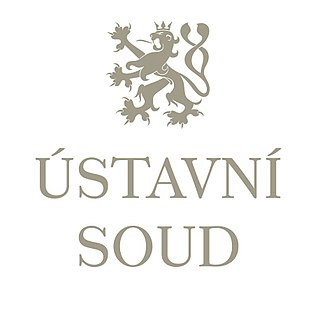
The Constitutional Court of the Czech Republic is the supreme constitutional court in the Czech Republic and the de facto highest and most powerful court in the land.

Czechoslovakism is a concept which underlines reciprocity of the Czechs and the Slovaks. It is best known as an ideology which holds that there is one Czechoslovak nation, though it might also appear as a political program of two nations living in one common state. The climax of Czechoslovakism fell on 1918-1938, when as a one-nation-theory it became the official political doctrine of Czechoslovakia; its best known representative was Tomáš Masaryk. Today Czechoslovakism as political concept or ideology is almost defunct; its remnant is a general sentiment of cultural affinity, present among many Czechs and Slovaks.

Edvard Beneš was a Czech politician and statesman who served as the president of Czechoslovakia from 1935 to 1938, and again from 1939 to 1948. During the first six years of his second stint, he led the Czechoslovak government-in-exile during World War II.
This article describes ethnic minorities in Czechoslovakia from 1918 until 1992.
Events from the year 1918 in Czechoslovakia. The year was marked by the Czechoslovak declaration of independence and the Martin Declaration. The year also saw the election of the first President and Prime Minister of Czechoslovakia, Tomáš Masaryk and Karel Kramář respectively.

